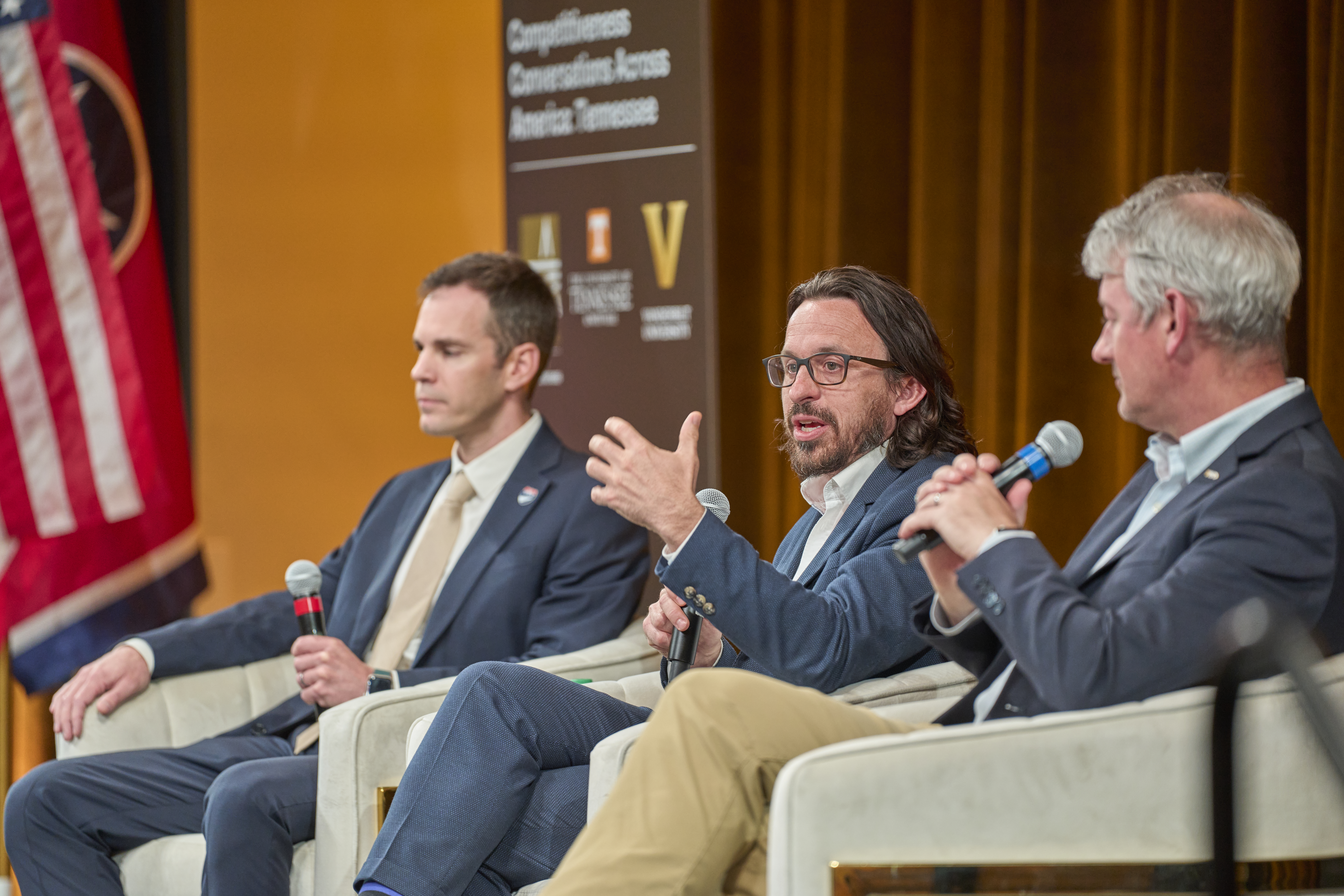Overview
While being caught in traffic may feel like an inconvenience to you, the cumulative cost on the economy is massive. A study by mobility analytics company Inrix found that Americans lost a total of 51 hours, and traffic congestion cost the United States more than $81 billion in 2021. Considering the high cost of traffic, a radical new approach to managing traffic flow on American infrastructure is needed. The team behind the TDOT I-24 Motion Project stepped up to find a new solution and, in so doing, built the smartest road in the world along a four-mile stretch of I-24 in Nashville, Tennessee.
Key Session Insights
The Tennessee Department of Transportation (TDOT) I-24 Motion project began with a single mission: to discover the root causes of traffic jams. If those root causes can be addressed, traffic could be less severe for everybody on the I-24 roadway and, if it worked on the I-24, apply the learnings and technology from the project to highways across the country.
A key challenge in solving traffic problems on the I-24 in Nashville is minimizing "phantom traffic jams." Dan Work, Professor of Civil and Environmental Engineering at Vanderbilt University, explained that these jams are caused by a ripple effect in traffic flow. When one car brakes abruptly, it disrupts the entire stream of traffic. As Work described, "When you tap the brakes, the driver behind you, who may not be paying full attention, has to brake harder to avoid a collision. The next driver reacts even more aggressively, creating a ripple effect that results in a phantom traffic jam with no apparent cause, but it's due to the way we drive."
Dan Work and Jonathan Sprinkle, Professor of Computer Science at Vanderbilt University were part of the CIRCLES Consortium, a collaboration of researchers from across multiple universities who came to Nashville to carry out a bold experiment: to dampen phantom traffic waves to save energy, using 100 cars that ran AI algorithms. The Vanderbilt team worked closely with Josh Westerhold, Senior Manager of Mobility at Nissan Americas, to carry out this first experiment on the TDOT I-24 Motion testbed. The team had three major challenges to overcome:
- Invent an AI system to control cars on the freeway.
- Source the one hundred cars needed to deploy on the freeway to run their experiment in an economically feasible way.
- Build a system that could accurately measure the impact of the experiment.
Despite these challenges, the team, and the organizations they represented, saw the potential for the project to deliver positive systemic change, and their respective organizations looked creatively for ways to say “yes” to the project.

"Nissan’s desire to partner was about improving everyone’s thinking through and affecting a large systemic change that will ripple down to our customers at the end of the day. And we can be a leader at the forefront.”
Josh Westerhold
Senior Manager, Mobility, Nissan Americas
Here’s what the project teams did: To mitigate costs, Vanderbilt partnered with Nissan to lease 100 cars that were temporarily modified for the experiment. When working through the
terms with Nissan, Vanderbilt’s Sprinkle said they ensured the automaker that Vanderbilt’s graduate students would be trained to prepare these leased vehicles for the experiment without damage.
But a big question to be answered was how to measure, and therefore research, phantom traffic jams, which are unpredictable. To solve the problem, the team created algorithms to use the sophisticated camera system that is part of the TDOT I-24 Motion Testbed. TDOT installed 4K resolution cameras throughout the four-mile zone of the experiment. Using an AI system to process the data of the traffic patterns, the team studied the behavioral patterns of drivers that precipitated phantom traffic jams.
From this research, CIRCLES researchers built an AI system that strategically changed the speeds of “influencer” automobiles. By adjusting the influencer cars and speed limits, the system effectively helped optimize traffic flows and limit phantom traffic jams.
What may be most important in this story is not the improved safety, conservation of time, and sustainability benefits, but the value of strategic partnerships across leading organizations to push innovation forward. The collaboration between Vanderbilt, Nissan, the Tennessee Department of Transportation, and the other universities in CIRCLES, created synergies by bringing together resources, ideas, talent, technology, and infrastructure in a way no single organization could manage on its own—all to help more efficiently manage Nashville’s, and the country’s, daily commute. This public-private partnership provided the security for the researchers to test their innovation before scaling it. Moreover, the federal government played a role, as the U.S. Department of Energy and the National Science Foundation provided funding for the university teams.



